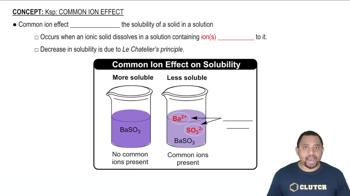Here are the essential concepts you must grasp in order to answer the question correctly.
Ionic Charge
Ionic charge refers to the electrical charge that an ion carries, which results from the loss or gain of electrons. Cations are positively charged ions formed by losing electrons, while anions are negatively charged ions formed by gaining electrons. Understanding the charge is crucial for naming ions correctly, as it influences the ion's nomenclature and its behavior in chemical reactions.
Recommended video:
Common Ion Names
Common ion names are standardized names used to identify ions based on their elemental composition and charge. For example, Ba<sup>2+</sup> is known as barium ion, while ClO<sub>4</sub><sup>-</sup> is called perchlorate ion. Familiarity with these names helps in accurately communicating chemical information and understanding the roles of different ions in compounds and reactions.
Recommended video:
Polyatomic Ions
Polyatomic ions are ions composed of two or more atoms covalently bonded together, which collectively carry a charge. Examples include HCO<sub>3</sub><sup>-</sup> (bicarbonate) and NO<sub>2</sub><sup>-</sup> (nitrite). Recognizing polyatomic ions is essential for naming compounds and understanding their chemical behavior, as they often participate in various chemical reactions and form part of larger molecular structures.
Recommended video:
Polyatomic Ion Variations
 Verified step by step guidance
Verified step by step guidance


